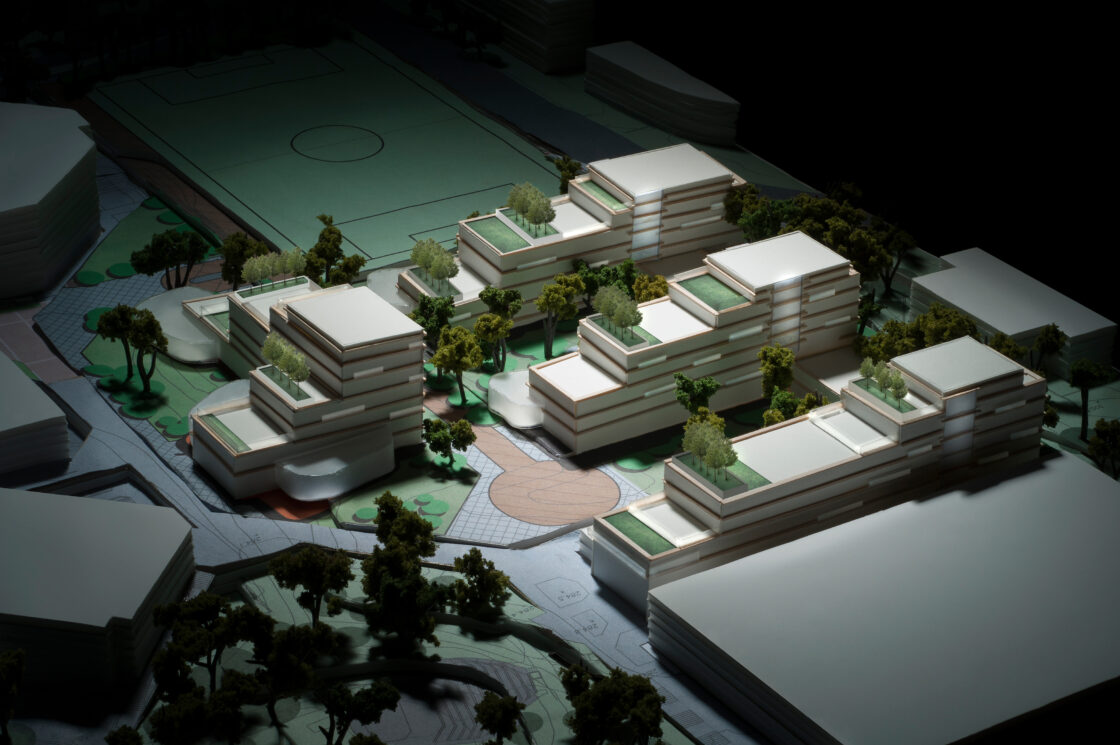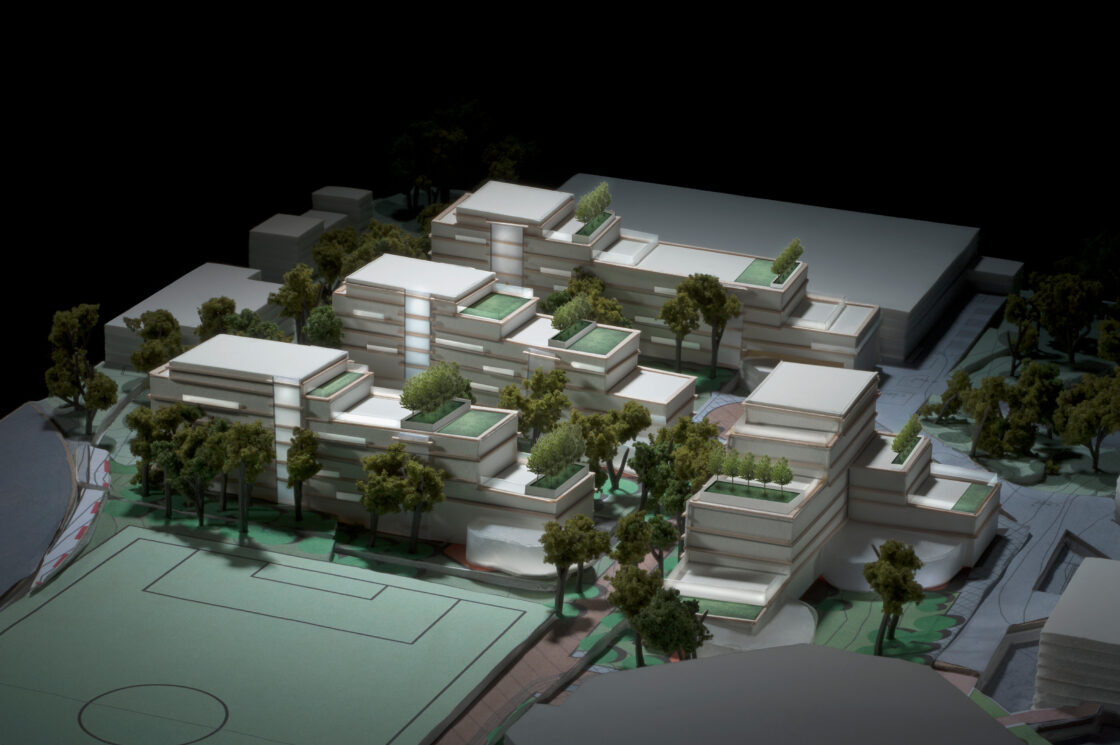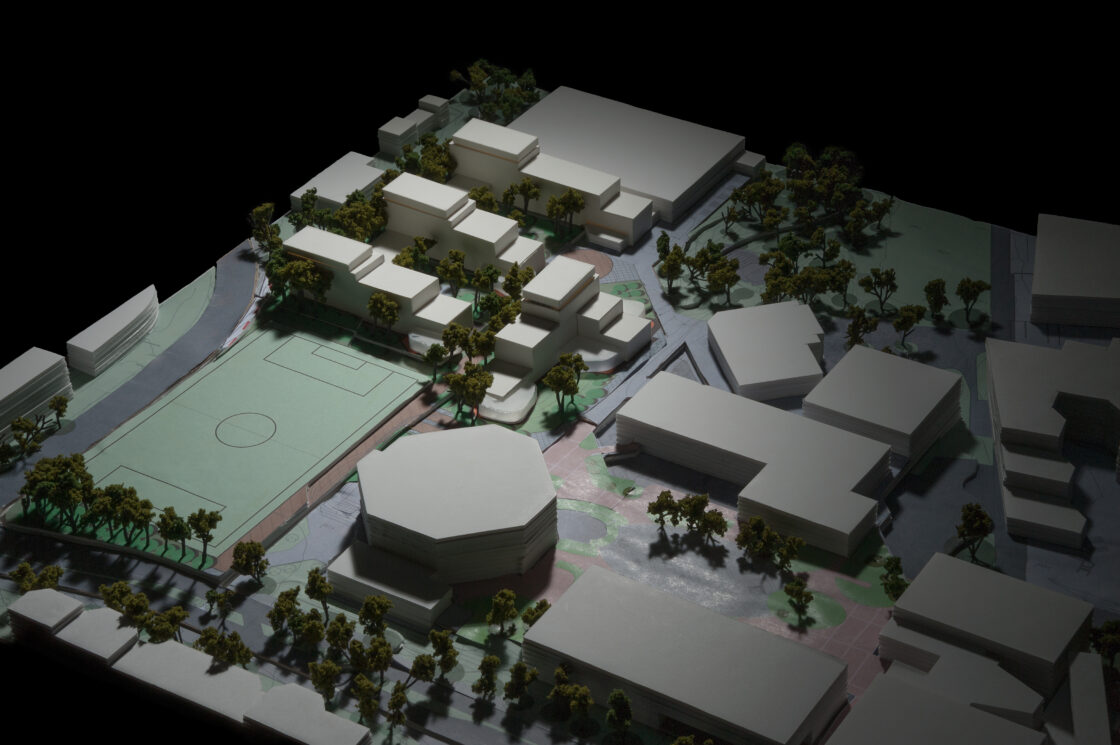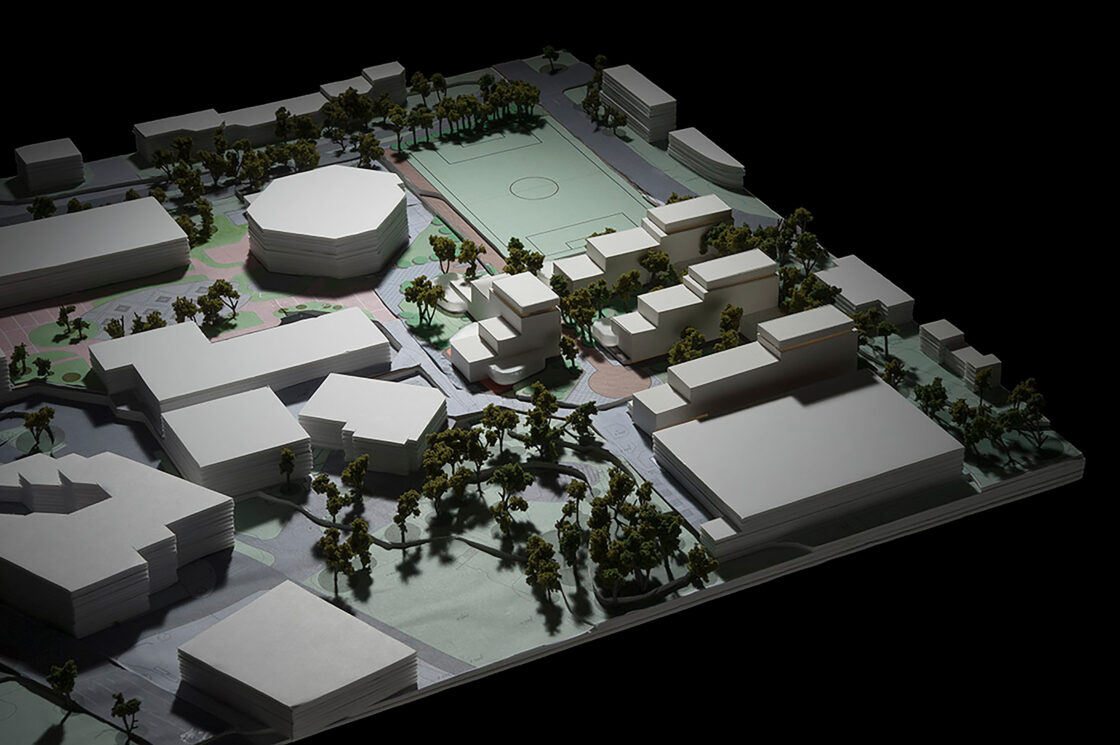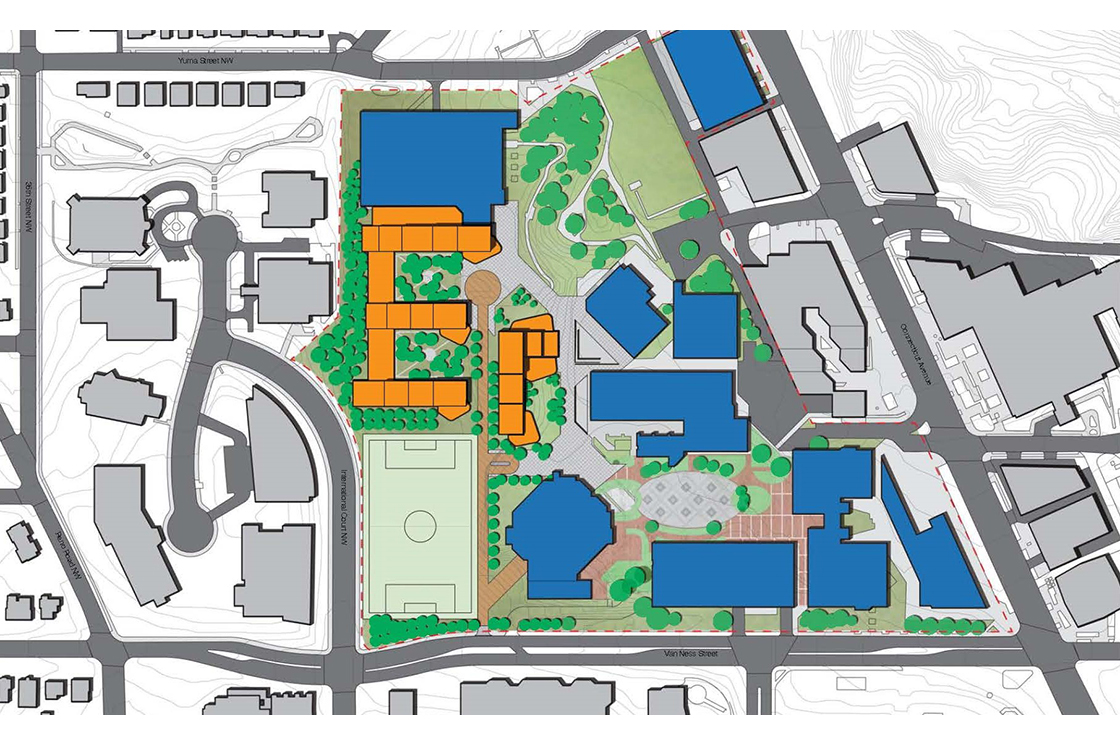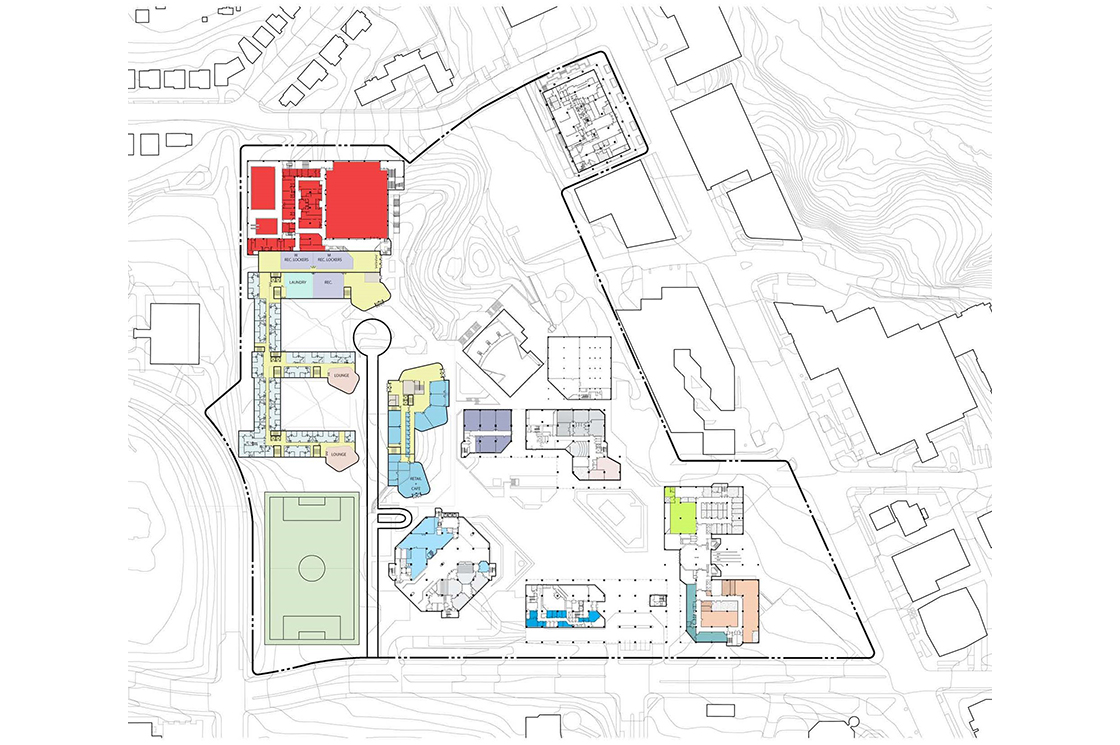University of the District of Columbia
Washington, DC
Quick Facts:
Client: University of the District of Columbia, Washington, DC
Market: Academic, Residential
Size: 260,000 gsf, 600 beds in 4 buildings
Services: Campus Planning, Architecture
Project Team: Winstanley Architects & Planners – Design Architect, Brailsford & Dunlavey – Program Managers
Model Photos: Jessica Marcotte
Winstanley Architects & Planners worked in conjunction with Brailsford & Dunlavey to conduct the feasibility study to construct residence halls on campus to house 600 beds. The objective of the study is to determine building design concepts and the best location for the student housing. Integral to this design study; demand, relationship to neighbors and costs were developed as a part of the overall feasibility plan.
This analysis was based on a visioning session, peer university benchmarking and surveys of the UDC community to ascertain demand, needs and space program requirements. A number of configurations were tested and presented to the university and reviewed with neighboring stakeholders. Input from the neighboring residential community indicated their preference that the student housing be located as centrally to the campus as possible. Input from the United States Department of State, custodian of the Diplomatic Overlay Zone, indicated their preference that the Student Housing be located as far from the diplomatic buildings at the intersection of Van Ness Street and International Drive, NW as practical.
The Student Housing Zone should be relocated to the north to be more central to the campus, distant from the Diplomatic Overlay Zone and sheltered from the adjacent residential zones. The existing NCAA athletic field along with the planned Student Center Geo-thermal fi eld should be relocated to the practice fi eld area. The facility should be constructed in two phases to better match demand with the availability of housing. This new development project should be used as leverage to improve the internal connections to Dennard Plaza and the various campus zones and to improve the athletics program and upgrade or replace Performing Arts building 46 west.
The final concept is 260,000 gsf with 598 beds to be constructed in four buildings built in phases. The design combined both primary attributes of the east-west orientation and the north-south access road into a new concept. The final massing is organized around the access road. The four-building complex sits on both sides of the road. On the west side the massing is organized in the east-west orientation to minimize the exposure to the International Center. Along the road, the lobbies to the student residences make access very easy. Both the elevator cores and lounges are also located near the road to provide both visibility and easy accessibility.

